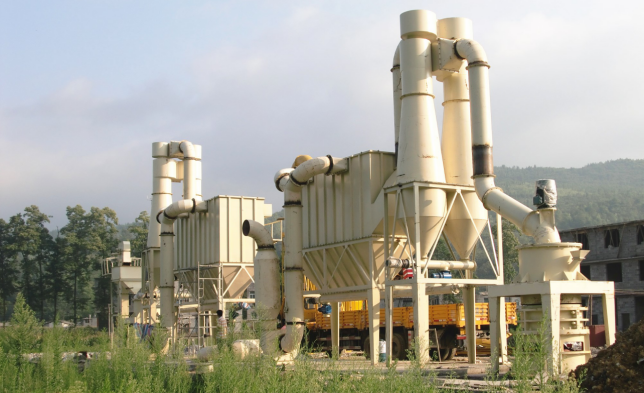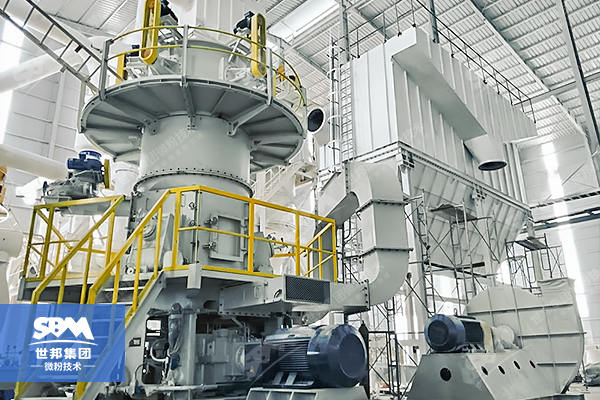Project Name: Dolomite powder grinding mill plant in Hebei,ChinaProcessing material: Dolomite
Finished product fineness: 2000 mesh
Finished product output: 8 tons per hour
Finished product use: Dolomite can be used in building materials, ceramics, glass and refractory materials, chemicals, agriculture, environmental protection, energy conservation and other fields.
Dolomite is mainly used as a flux for alkaline refractories and blast furnace ironmaking;
Dolomite is used for the production of glass and ceramics and lacks flux limestone.
After being superfinely ground, high-quality limestone is widely used in the manufacture of paper, rubber, paint, coatings, medicine, cosmetics, feed, sealing, bonding, polishing and other products.
Equipment configuration: HGM Micro Powder Grinding Mill/ Raymond Mill/ Powder Surface Coating Machine/ Hammer Crusher/ Bucket Elevator
PROJECT INTRODUCTION
Dolomite is a carbonate mineral, including iron dolomite and manganese dolomite. Its crystal structure is like calcite, often rhombohedral. Bubbles will slowly appear when exposed to cold dilute hydrochloric acid. Some dolomites emit orange-red light under cathode ray irradiation.
Dolomite is the main mineral component of dolomite and dolomitic limestone.
Dolomite can be used in building materials, ceramics, glass and refractory materials, chemical industry, agriculture, environmental protection, energy saving and other fields. Mainly used as a flux for alkaline refractories and blast furnace ironmaking; as well as flux limestone, which is lacking in ingredients for glass and ceramic production.
After superfine grinding of high-quality limestone, it is widely used in papermaking, rubber, paint, coatings, medicine, In the manufacturing of cosmetics, feed, sealing, bonding, polishing and other products.
THE PROJECT SITE

 Dolomite Powder Grinding Mill Plant
Dolomite Powder Grinding Mill Plant
 HGM Dolomite Powder Grinding Mill
HGM Dolomite Powder Grinding Mill
 Dolomite Powder Production Line in Hebei
Dolomite Powder Production Line in HebeiCLIENT FEEDBACK
This dolomite grinding mill works very well, and the fineness of the finished product meets our requirements, which greatly reduces our production costs and improves production efficiency.
Customer: Mr. Li
PROJECT BENEFITS

Energy saving and environmental protection, green grinding
The dust of the production line is collected by a negative pressure dust removal system and placed in a fully enclosed finished product warehouse, which realizes no dust spillage, a clean production environment, and discharge conforms to international standards.
High cost performance, considerable investment income
The fine calcium carbonate particles produced by this project have excellent shapes and better quality after being modified by the CLG powder surface modifier. They are well received in the market and have a high profit per ton.
Can run continuously for 24 hours
The reducer has circulating oil lubrication and circulating water cooling system to ensure the continuous operation of the ring roller mill for 24 hours.
Full process service, save time and worry
SBM Ultrafine Powder Technology Co.,Ltd. project design, equipment production, installation, commissioning, and after-sales service are integrated. The whole process service is convenient for users, and it has won time for the smooth commissioning of the project in a short time.
EQUIPMENT CONFIGURATION
Extended reading:
What is the difference between dolomite and limestone?
What is limestone?
The main component of limestone is calcium carbonate, and its Mohs hardness value is 3.0. Pure limestone is white. Limonite and siderite give limestone a yellow-brown pattern and color.
Usually after limestone is cut, there are intact or destroyed biological fossils inside the stone. Unless limestone forms a reef, generally speaking, limestone produced in the sea has a layered structure. Its structure may be dense, or it may have granular pores.
 Limestone
Limestone What is dolomite?
The main component of dolomite is calcium magnesium carbonate, and its Mohs hardness value (MOH) is between 3.5 and 4. The main components of dolomite ore are calcium carbonate and magnesium carbonate. The appearance is almost the same as limestone. In fact, dolomite is often found in areas where limestone deposits are found. Most dolomite deposits contain a certain percentage of limestone.
Dolomite
The method of distinguishing dolomite and limestone
Usually two methods of hardness test and acid test are used to distinguish between limestone and dolomite. The Mohs hardness test method is to use another metal with a known hardness to scrape this stone. Therefore, the hardness value of dolomite is between 3 and 4.
The acid test method is to apply diluted hydrochloric acid to the surface of the stone. The limestone reacts strongly, while the dolomite reaction is not obvious, and the surface will form a powder. If the above test results are not obvious, you need to do laboratory analysis.
Generally, dolomite and limestone can be distinguished according to the following points:
1. HardnessThe hardness of dolomite is relatively high, with a Mohs hardness of 3.5 to 4.0; while the hardness of limestone is only about 3.0 with a Mohs hardness.
2. ProportionThe specific gravity of dolomite is also larger than that of limestone, the former is 2.8 to 2.95, and the latter is 2.7.
3. Light splitting rate (Identified by the oil stain method)
| Category |
NO |
NE |
| Dolomite |
1.68 |
1.500 |
| Limestone |
1.658 |
1.486 |
4. Compressive strength (expressed by the force received per unit area)
The compressive strength of dolomite is less than 3000 kg per square centimeter, and the compressive strength of limestone is less than 1000 kg per square centimeter.
5. Chemical composition.Dolomite contains a significant amount of MgO, generally 0.4 to 20%, while limestone has a low MgO content, generally only 0.2 to 8.0%.
6. The hotter the dolomite is, the hotter the manganese acid is; the color changes when the cobalt nitrate solution is burned; the crystal faces are curved, which can be distinguished from limestone.
7. With the increase of calcination temperature, the two are different in the changes of specific gravity, compressive strength and linear shrinkage.
8. The main components of dolomite ore are calcium carbonate and magnesium carbonate. The biggest difference between the two is that the important basis for dolomite is that the content of dolomite minerals in the rock is not less than 50%. In addition, dolomite is a porous stone. Because the chemical components that make up dolomite are not sensitive to acidic substances, dolomite has better weather resistance.
Uses of dolomite
Dolomite can be used in building materials, ceramics, glass and refractory materials, chemical industry, agriculture, environmental protection, energy saving and other fields.
Mainly used as a flux for alkaline refractories and blast furnace ironmaking;
Producing calcium magnesium phosphate fertilizer and preparing magnesium sulfate;
And the ingredients for the production of glass and ceramics.
It is also used as a flux in the glaze.










 India
India
 Vietnam
Vietnam
 China
China